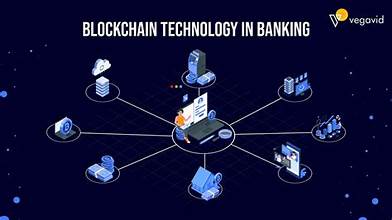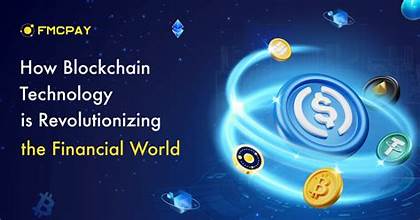
In recent years, blockchain technology has emerged as a revolutionary force in various industries, but its impact on financial services is particularly profound. As we navigate through 2024, blockchain is not only reshaping the financial landscape but also paving the way for more secure, transparent, and efficient financial transactions. This article explores how blockchain technology is transforming financial services in 2024, examining its benefits, applications, and future potential.
1. Enhanced Security and Fraud Prevention
Blockchain technology’s most significant advantage lies in its ability to enhance security. By providing a decentralized ledger that records transactions across a network of computers, blockchain ensures that data cannot be altered retroactively without the consensus of the network. This immutability makes blockchain a powerful tool for preventing fraud and cyberattacks in financial services.
In 2024, financial institutions are increasingly leveraging blockchain to protect sensitive data and ensure secure transactions. For example, blockchain-based systems are being used to secure personal identification information (PII) and financial transactions, reducing the risk of identity theft and data breaches. Additionally, smart contracts—self-executing contracts with the terms directly written into code—automate and enforce agreements without the need for intermediaries, further reducing the potential for fraudulent activity.
2. Improved Transparency and Traceability
Transparency is another area where blockchain is making significant strides. Traditional financial systems often suffer from a lack of transparency, leading to issues such as hidden fees and questionable practices. Blockchain addresses these concerns by providing a transparent and immutable record of all transactions.
In 2024, financial services are harnessing blockchain to enhance transparency in various ways. For instance, supply chain finance platforms are using blockchain to provide real-time visibility into the movement of goods and funds, allowing stakeholders to track transactions and verify the authenticity of products. Similarly, blockchain is being used in regulatory compliance to ensure that financial institutions adhere to laws and regulations, thus improving accountability and trustworthiness.
3. Faster and Cheaper Transactions
One of the most compelling advantages of blockchain technology is its ability to facilitate faster and more cost-effective transactions. Traditional financial systems often involve multiple intermediaries, each adding their fees and processing time. Blockchain’s decentralized nature eliminates the need for intermediaries, allowing for direct peer-to-peer transactions.
In 2024, blockchain is being increasingly adopted for cross-border payments, which have traditionally been slow and expensive due to intermediary banks and currency conversion fees. With blockchain, international transactions can be completed almost instantaneously at a fraction of the cost. For example, blockchain-based platforms like Ripple and Stellar are revolutionizing cross-border payments by enabling faster settlement times and reducing transaction fees.
4. Innovative Financial Products and Services
Blockchain is also driving innovation in financial products and services. In 2024, we are witnessing the rise of decentralized finance (DeFi), which utilizes blockchain to create open, permissionless financial systems that operate without traditional financial intermediaries. DeFi platforms offer a range of financial services, including lending, borrowing, and trading, through decentralized applications (dApps) built on blockchain networks.
Moreover, blockchain is enabling the creation of new financial instruments such as tokenized assets. Tokenization involves representing physical or digital assets as tokens on a blockchain, allowing for fractional ownership and easier transferability. This innovation is democratizing access to investment opportunities and opening up new avenues for asset management.
5. Regulatory and Legal Considerations
As blockchain technology continues to evolve, so do the regulatory and legal frameworks surrounding it. In 2024, regulators and financial authorities are increasingly focusing on developing comprehensive policies to address the unique challenges posed by blockchain. This includes ensuring that blockchain-based financial services comply with existing financial regulations and protecting consumers from potential risks.
Regulatory bodies are working to strike a balance between fostering innovation and ensuring market integrity. For example, the implementation of regulations such as the General Data Protection Regulation (GDPR) in the European Union and the Financial Action Task Force (FATF) guidelines for anti-money laundering (AML) are shaping the way blockchain-based financial services operate. Financial institutions are adapting to these regulations by implementing measures to ensure compliance and mitigate potential legal risks.
6. Future Prospects and Challenges
Looking ahead, the future of blockchain in financial services holds immense promise. The technology’s potential to revolutionize the industry is matched by its challenges, including scalability issues, interoperability between different blockchain networks, and the need for continued regulatory clarity.
Innovations such as Layer 2 solutions and blockchain interoperability protocols are being developed to address these challenges and enhance the scalability and functionality of blockchain networks. Additionally, ongoing research and collaboration between industry stakeholders are crucial for overcoming obstacles and realizing the full potential of blockchain in financial services.
Conclusion
In 2024, blockchain technology is undeniably transforming financial services, offering enhanced security, transparency, and efficiency. From improving transaction speed and reducing costs to driving innovation in financial products and services, blockchain is reshaping the way we conduct financial transactions and manage assets. As the technology continues to evolve, its impact on the financial industry will likely become even more profound, paving the way for a more secure, transparent, and inclusive financial ecosystem.

